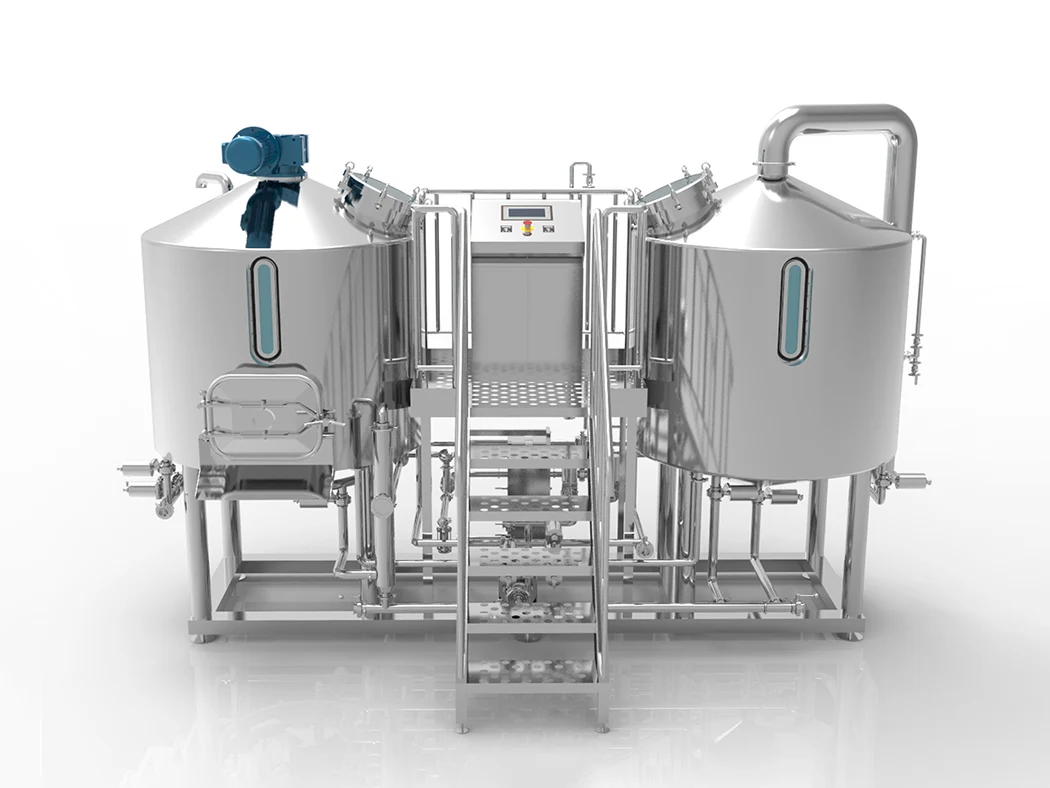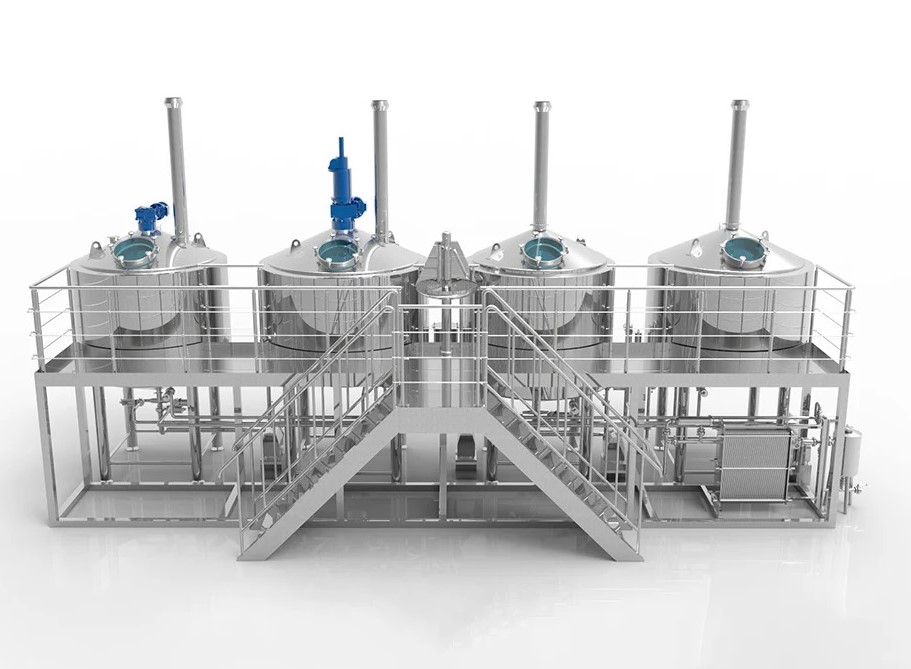Great spirits start with the right ancora. Choose wrong, and you waste time, energy, and flavor. Pick smart, and your ancora turns mash into clean character—safely, repeatably, profitably.
A distilling pot—usually called a vaso ancora—is a vessel and condenser sistema used to distill a fermented pastone. In a boil, alcohol vapor rises, travels through piping, then condenses into a distillato. Pot distillazione preserves flavor (good for whisky, rum, e brandy). Fotogrammi della colonna E reflusso ancora designs make cleaner, higher-proof spirits (great for vodka and neutral bases).
What is a pot still, and how does a still actually distill alcohol?
A vaso ancora is a heated kettle (often copper or stainless steel) connected to a swan neck and condenser. You heat the pastone; alcohol boils sooner than water, so vapors travel up the ancora, through a line arm or copper pipe, then condense back to liquid. This is the heart of the processo di distillazione. Il ancora is the core piece of equipment in any distilleria.
Because a vaso ancora does batch distillation, you run discrete charges—ideal when you want flavor to shine. A ancora like this is used to produce expressive spirits: whisky/whisky, rum, gin bases with botanicals added later, schnapps, and aromatic brandy. As a brewing-and-distilling manufacturer, we design the ancora around your goal: clean, fruity, or malty character, and the alcohol content target that fits your label.
“The art is simple: heat, separate, condense—then repeat until the concentration of alcohol meets your style.”
Copper still vs. stainless steel stills: which still is right for you?
Ancora rame o stainless steel stills—both work. Copper is an excellent conductor of heat and scrubs sulfur compounds; many heritage makers love it. Stainless is durable, cost-effective, and easier to clean with CIP (clean-in-place). Modern builds often combine copper and stainless steel for the best of both.
If you run a tasting room or need fast turnarounds, acciaio inox with copper vapor paths is common. If you’re chasing ultra-classic notes, a full-copper still may fit. Either way, every ancora we build includes sanitary fittings and safe venting—top of the line features that matter in daily use. See how we integrate these choices into attrezzature per distillerie commerciali (gasket specs, tri-clamps, heat-up rates) in our engineered systems: attrezzature per distillerie commerciali.
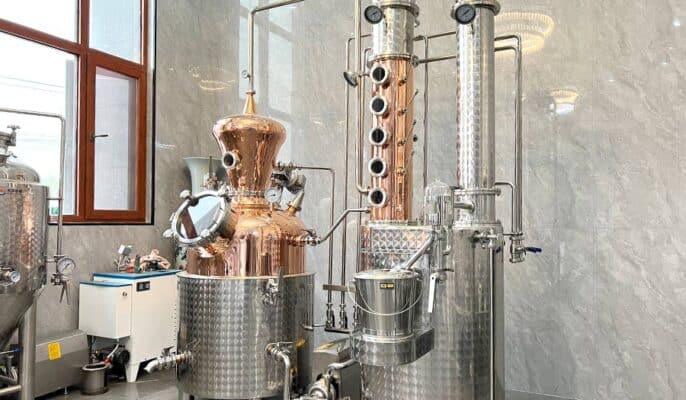
Pot distillation vs. column stills and reflux still: what’s the difference?
Distillazione in vaso happens in cycles. You charge the pot, run the cut, and collect. It’s expressive and traditional. Fotogrammi della colonna add multiple plates (or a flute section) to increase rectification. A reflusso ancora returns part of the condensed vapor back down the column to sharpen separation, raising proof and neutral character.
Rule of thumb:
- Pentola ancora= more congeners, more flavor, lower ABV per pass.
- Fotogrammi della colonnacon reflux = cleaner, higher ABV, great for vodka or gin base.
If you’re planning an aroma-forward sistema di distillazione for a micro brand, explore plate counts, dephlegmator control, and heat input on our page for alcohol distillation equipment—it covers plate sizing and energy design: alcohol distillation equipment.
Quick comparison table
| Caratteristica | Pentola Ancora | Column Stills / Reflux Still |
| Run style | Batch distillation | Continuous or batch |
| Typical single-pass ABV | ~25–40% → spirit run to 60–80% | 90%+ with proper reflux |
| Flavor | Rich, character-forward | Clean, neutral-leaning |
| Il migliore per | whiskey/whisky, rum, brandy, schnapps | vodka, gin base, neutral |
| Complessità | Più basso | Higher (valves, plates, dephlegmator) |
From mash to distillate: how the distillation steps protect flavor
Start with clean fermentation. Your fermentatore shapes the profile before a ancora touches it. Temperature-controlled tanks and oxygen-free transfers reduce stress esters. If you need professional tanks sized to match your ancora, review our jacketed designs and CIP manifolds: stainless steel fermenter solutions.
On the ancora, stabilize heat input, then collect heads, hearts, and tails. The hearts become your distillato. Spirit intended for botti di rovere can be slightly lower proof to retain body; spirits intended for gin o vodka may perform better with higher rectification or a small reflux attachment on a ancora.
Choosing distilling equipment and condenser types for whiskey, gin, vodka, and rum
Tuo attrezzature per la distillazione choice—shell-and-tube vs. liebig condenser, line-arm angle, and head size—steers reflux inside the head. Whisky/whisky E rum often use gentler vapor speeds; vodka likes greater purity via plates or a small reflusso ancora module; gin needs basket space for botanicals and clean base spirit.
We supply matched distilling equipment and supplies—valved parrot, proofing hydrometers, and sanitary drains—because every ancora benefits from safe, repeatable kettle-to-receiver flow. When it’s time to package, you can pair the line with an integrated beer bottling machine for small RTD runs or house spirits.
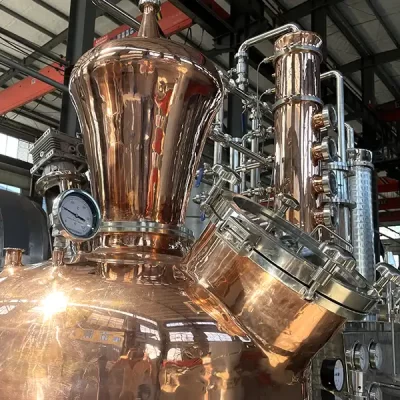
Are alembic stills and flute columns right for craft distilleries?
Traditional alembic E alembic stills feature onion-domed heads that “breathe,” nudging gentle internal condensation. They’re iconic for brandy E schnapps. Modern flute columns (sight-glass plates) give you on-the-fly control: open plates for character like a pot ancora; engage more reflux for cleaner spirit.
For touring visitors, a showpiece ancora matters. We build display-ready finishes without sacrificing wash safety or pressure relief. That balance is why many craft distilleries choose hybrid builds that look classic but run efficiently on electric or steam.
Moonshine still kits and home distilling equipment: safety and law first
You’ll find stills for sale everywhere—moonshine kits, moonshine still kits, copper moonshine stills, e stainless steel moonshine stills—but laws vary. In many places you can’t sell moonshine or even produce it without permits. No reputable maker should claim to provide you with a moonshine; we provide safe home distilling products E home distilling equipment for legal, permitted use only. If you plan to make moonshine, research your jurisdiction first.
We also design small legal pilot units for recipe R&D. If you’re upgrading, see our distillatore di alcol and turnkey pages for scaled systems (heat input curves, venting, UL panels): alcohol distiller and turnkey distillery equipment.
Designing a complete still spirits line for a micro project
A “still spirits” layout means more than the ancora. It’s the crush, cook, transfer, fermentation, ancora, cuts, proofing, resting, and packaging—all balanced for throughput. Our micro lines include steam or electric kettles, gaskets rated for ethanol, and automated cooling control. That’s micro distillery equipment engineered for safe uptime.
If you’re exploring funding or a tasting-room buildout, our attrezzature per la distillazione page outlines vessels, controls, and footprints for staged investment: affordable distillery equipment and commercial layouts.
Sanitary design and CIP: why stainless steel can be easier to clean
Daily cleaning pays back. Smooth welds, drain angles, and spray-ball coverage reduce biofilms. Acciaio inox kettles with CIP lances are easier to clean and keep operators safe. In mixed-material builds, we maintain copper where vapor chemistry benefits it and acciaio inox where sanitation matters most.
For plants that also package beer or RTDs, we integrate downstream fillers and date coders. See multi-line options on our brewery sistema di birrificazione pages, built with the same sanitary principles used on attrezzature della distilleria: automated beer brewing system options.
Sizing the still: capacity, throughput, and proof planning
Work backward from demand. Spirit styles, cut strategy, and desired alcohol content dictate kettle volume and heat input. A larger ancora lets you run fewer charges; a smaller ancora gives agile R&D with lower risk. Always plan ventilation and relief before cosmetics.
Text-only mini-chart: single-pass ABV progression
- Wash (8–12%) → Stripping run (~25–40%)
- Spirit run with modest internal reflux(~60–80%)
- With plates (fotogrammi della colonna): ~90–95% for vodkabases
(Indicative; your actual numbers depend on feed, cuts, and control.)
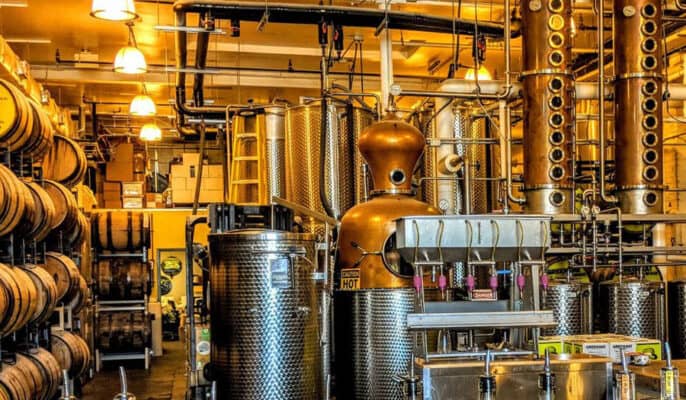
Materials, heat, and control: why details make a world-class difference
I materiali like copper scrub sulfur; acciaio inox keeps sanitary welds tight. Electric elements respond quickly; steam jackets deliver even heat. Flowmeters on your condenser water stabilize knockdown and reduce smearing. Small choices stack into world class repeatability.
We specify NEMA/IEC panels, variable heat input, and food-grade gaskets. This “boring but crucial” engineering turns a pretty ancora into a dependable workhorse—one that’s truly di alta qualità where it counts, even if you never show the wiring to a guest.
From fermenter to oak barrels to the bottling line
Great spirit starts long before the ancora. Correct yeast nutrition, clean tunnel di mash, and temperature-controlled fermentatore choices set the table. After cuts, rest your spirit in stainless or fill botti di rovere at the right proof to shape extraction.
Ready to package house cocktails or NPD runs? Pair the ancora cellars with a compact filler. Our range includes counter-pressure bottlers and seamers that play nicely with spirits—see options under beer bottle machine & filling equipment.
Legal, safety, and quality notes every home distiller and pro should know
Vent everything properly, use PRVs, and never seal a boiling kettle without relief. Keep records of each batch distillation—input gravity, time, proof, and temperature. Many regions require permits even for R&D. Home hobbyists (home distillers) must follow local laws; commercial operators should maintain HACCP-style logs.
If you’re expanding into cider or wine cross-over products, your cellar can leverage winery-grade tanks and fittings—we build those as well: wine making equipment & cider fermenter vessels.
A buyer’s view: getting a complete still without guesswork
You don’t have to pick a complete still in isolation. We map utilities, ventilation, and room layouts with you. Then we size the condenser, choose copper sections, and verify knockdown capacity. We also help match your ancora to downstream packaging and compliance.
Prefer staged investment? Start with a base kettle and later add plates or a small reflusso ancora head. We keep a large selection e un range of products—from compact pilots to top of the line showcase systems—so you can scale with confidence. Explore specs and stills for sale on our turnkey pages: distillery equipment and distilling equipment.
FAQ: clear answers for new and growing distilleries
What size still should I start with?
Start with sales goals and proof targets. Back-solve liters of pure ethanol needed per week, then choose a ancora size and heat source to meet that throughput with sane hours. Consider expansion—can your kettle accept a plate column later?
Do I need copper if I choose stainless?
Often yes—in the vapor path. Copper is an excellent conductor of heat and bonds sulfur. Many pro builds mix copper and stainless steel: stainless kettle, copper helmet or packed section, stainless piping, and a durable condenser.
Can a still to produce both whiskey and vodka?
Yes, with modularity. Use the base vaso ancora per whiskey/whisky E rum. Add plates and run higher reflux to make a cleaner base for vodka o gin botanicals.
Is “best moonshine” about the still or the recipe?
Both—clean fermentation and careful cuts matter. A better alcohol still won’t fix a stressed ferment, but it helps you hold a stable run for high-proof hearts. Remember: you cannot legally sell moonshine in many regions.
Do I need a still kit or a custom system?
A still kit is fast to deploy; a custom system matches utilities, code, and workflow. If you want flexibility and a future-proof plant, a modular build wins. See our alcohol distillery equipment for sale for scalable options and budgets: alcohol distillery equipment for sale.
Where do bottling and labeling fit?
Right after proofing and rest. A compact counter-pressure filler integrates cleanly with a spirits line. Review fillers that suit small spirits runs here: beer can filling machine & bottling options.
Pot Still Buying Checklist (use, not hype)
Capacity & Throughput
- Charge volume vs. target cases per week
- Heat source sizing (steam/electric)
- Knockdown capacity of the condenser
Quality & Safety
- Relief valves, venting, NEMA/IEC controls
- Food-grade gaskets for ethanolservice
- Materials where they matter (copper or stainless steelin the right places)
Workflow Fit
- Floor drains, CIP, clean transfers
- Integration to fermentatorefarm and packaging
- Room to add plates later
When you’re ready to specify, compare modular options and pricing on our turnkey pages: attrezzature per la distillazione E attrezzature per distillerie commerciali.
Pot vs. Column: fast highlights (for planners)
- Pentola ancorapreserves aroma; great for whisky, rum, brandy, e schnapps.
- Colonnacon reflux makes neutral for vodka or light gin base.
- Hybrid gives both: run plates down for character, up for neutral.
We design practical attrezzature della distilleria that’s ready for daily production, not just showroom photos.
Sources & further reading
- General overview of distilling science (non-technical): Istituto americano di distillazione
- Materials & sanitation basics in beverage plants: Brewers Association – Sanitation
- Safety and legal frameworks vary by region; consult your local alcohol control board.
Summary: what to remember
- Choose a still that fits your spirit and throughput.Pot for character; plates/reflux for purity.
- Materials matter.Copper for chemistry, acciaio inox for sanitation and CIP.
- Engineer the whole line.Mash tuns, fermentatore, ancora, proofing, packaging.
- Design for safety.Venting, relief, controls—non-negotiable.
- Plan to scale.Start modular; upgrade plates later.
- Use trusted partners.Look for a range of products e un large selection that lets you grow.

